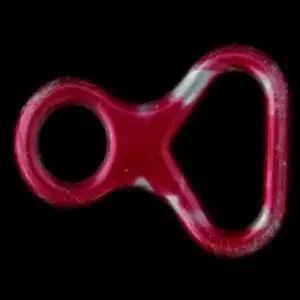Descenders are amazing tools that help keep you safe while rappelling, but only if you use them correctly! In this post, I will cover the critical safety steps you should follow when you use a descender.
What is a descender?
A descender is a device that is used to control the rate of descent of an object or person. It is typically used in rock climbing, abseiling, caving, canyoning and mountaineering, but can also be used for industrial applications such as rope access work, stage effects and window cleaning.
There are many different types of descenders available on the market, each with its own advantages and disadvantages. It is important to choose the right descender for the activity you will be undertaking and to familiarize yourself with its operation before use. Some common descenders include the figure-eight rappel device, the tubular or ”tube” device, the Sticht plate and the prusik knot.
How does a descender work?
A descender is a device that allows a person to safely travel down a rope. There are two basic types of descenders: friction and mechanical.
- Friction descenders work by using friction to slow the descent of a person down a rope. The most common type of friction descender is the brake bar, which is operated by pressing down on a lever with the hand. This type of descender is often used in emergency situations because it is quick and easy to use.
- Mechanical descenders use a series of cams or jaws to grip the rope, which slows the descent. These types of descenders are more commonly used for activities such as rock climbing because they provide more control and allow the user to stop at any time.
How do you choose the right descender for your needs?
There are many different types of descenders on the market, each with different features and benefits. With so many options available, it can be difficult to know which one is right for you.
Here are some things to consider when choosing a descender:
- The type of rope you will be using.
- The diameter of the rope.
- The weight of the person or object you will be descending.
- The environment you will be using the descender in (e.g., indoor or outdoor, wet or dry).
Once you have considered these factors, you can narrow down your choices and select the descender that is best suited for your needs.
How do you use a descender safely?
There are many different ways to use a descender, but all of them require following some basic safety procedures:
- Read the manufacturer’s instructions carefully before using the device.
- Inspect the device before each use. Do not use it if it is damaged in any way.
- Be sure that the anchor point is strong enough to support your weight.
- First, make sure that you are properly attached to the anchor point.
- Next, choose the appropriate descent speed. Too fast and you could lose control; too slow and you may not be able to stop in time.
- Finally, be aware of your surroundings and obey all signs and posted warnings.
- Do not exceed the manufacturer’s recommended weight limit for the device.
- Wear gloves to protect your hands from friction burns.
- Do not use if you are tired or dizzy, or if you have been drinking alcohol or taking medication that could impair your judgment or coordination.
What are the risks associated with using a descender?
There are risks associated with using a descender, which include:
- Falling: If you fall while using a descender, you could be seriously injured or killed.
- Being stranded: If your descender fails or gets stuck, you could be stranded on the wall or mountain.
What should you do if you have an accident while using a descender?
If you have an accident while using a descender, there are certain safety steps that you should take. First, descend slowly and carefully. If possible, stop and rest before continuing your descent. Next, check for injuries and be sure to get medical help if needed. Finally, inspect the equipment for damage and replace any damaged parts before using it again.
In Closing
Accidents can happen when using a descender if you don’t take the proper safety precautions. To avoid accidents, make sure you follow all instructions on using one. If you have any further questions, contact a climbing professional to assist you.

